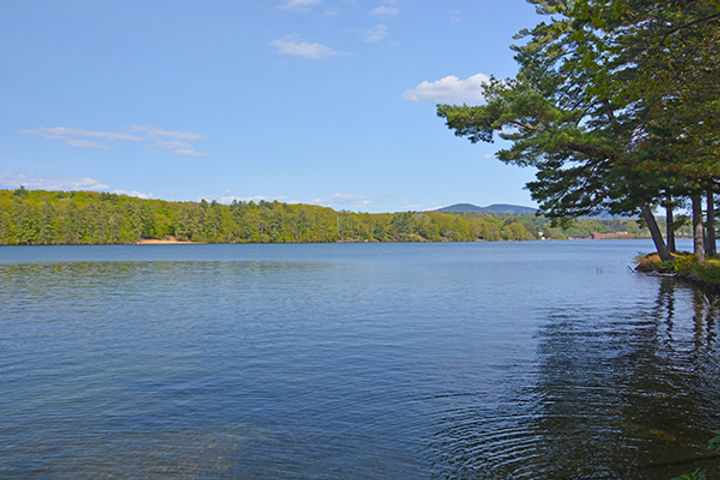

Invasive Species
What exactly is Variable Milfoil and what harm does it do?
Variable watermilfoil is a submerged aquatic plant that has densely packed whorled leaves. It is usually found along the shorelines of lakes and ponds. Watermilfoil can grow in depths of up to 10 - 12 feet, forming dense mats near the surface of the water. The plant produces a spire-like flower that grows above the water's surface for mid to late summer. It reproduces primarily by fragmentation and seed production. The plant can break apart very easily, and the fragments float to new locations and take root.
About 100 lakes, ponds, and rivers in New Hampshire have this exotic weed problem. It is considered the number one aquatic plant problem for lake residents, visitors and aquatic plant managers. Recent figures show that it is spreading at a rate of one lake each year since the 1980s and is taking over lakes at an alarming rate. Once milfoil is found in a lake it cannot be easily eradicated. It takes a great deal of money to attempt to control the growth, but often, if widely spread, cannot be stopped completely.
Milfoil is partially controlled in Opechee through DASH - Diver Assisted Suction Harvesting. Scuba divers with suction tubes swim in the lake and suck the weeds up in a slurry that is then filtered to remove the plant matter. Here's an interview by LOPA President, Ken Clark, with the team from Aqualogic that did the 2023 DASH.

Variable Milfoil
This feather-like submergent
plant can easily take over a
water body within a few years.

What is cyanobacteria?
The organism is found throughout the water column and can make the water appear blue-greenish in color when in bloom. Cyanobacteria can have toxins associated with them that can be harmful to humas and animals when present in high concentrations. High cyanobacteria counts necessitate the posting of swimming advisories or water use restrictions.
Why should you be concerned about the health of Lake Opechee?
The NH Dept. of Environmental Services estimates that as of 2022, there are 38 acres of variable milfoil in Lake Opechee. An algae bloom of cyanobacteria was also found in the Lake in 2021 prompting beach closures. When these aquatic plants grow they encroach into and replace the habitats of native plants, stunting fish growth and degrading wildlife habitat. Simply put, if you appreciate the value of your property and its surroundings, you need to care about and become active in maintaining the health and water quality of Lake Opechee. Poor water quality and pollution combined with increased weeds and exotic plants have a direct impact on your waterfront property value and enjoyment.
According to the NH DES, the milfoil problem in Lake Opechee will require a long-term plan from initial eradication efforts to ongoing management. Treatment can include chemicals such as 2,4-D followed by hand pulling, suction harvesting, and other methods. The cost of treatment is estimated at upwards of $20,000 per year.
How will our project be funded?
We work with the New Hampshire DES annually to secure an Exotic Aquatic Plant Control Grant.
But we need to match any funds received by the State, so we need to reach out to
our neighbors and users of Lake Opechee for financial support. We do that through membership dues and contributions from those who care about the late.
